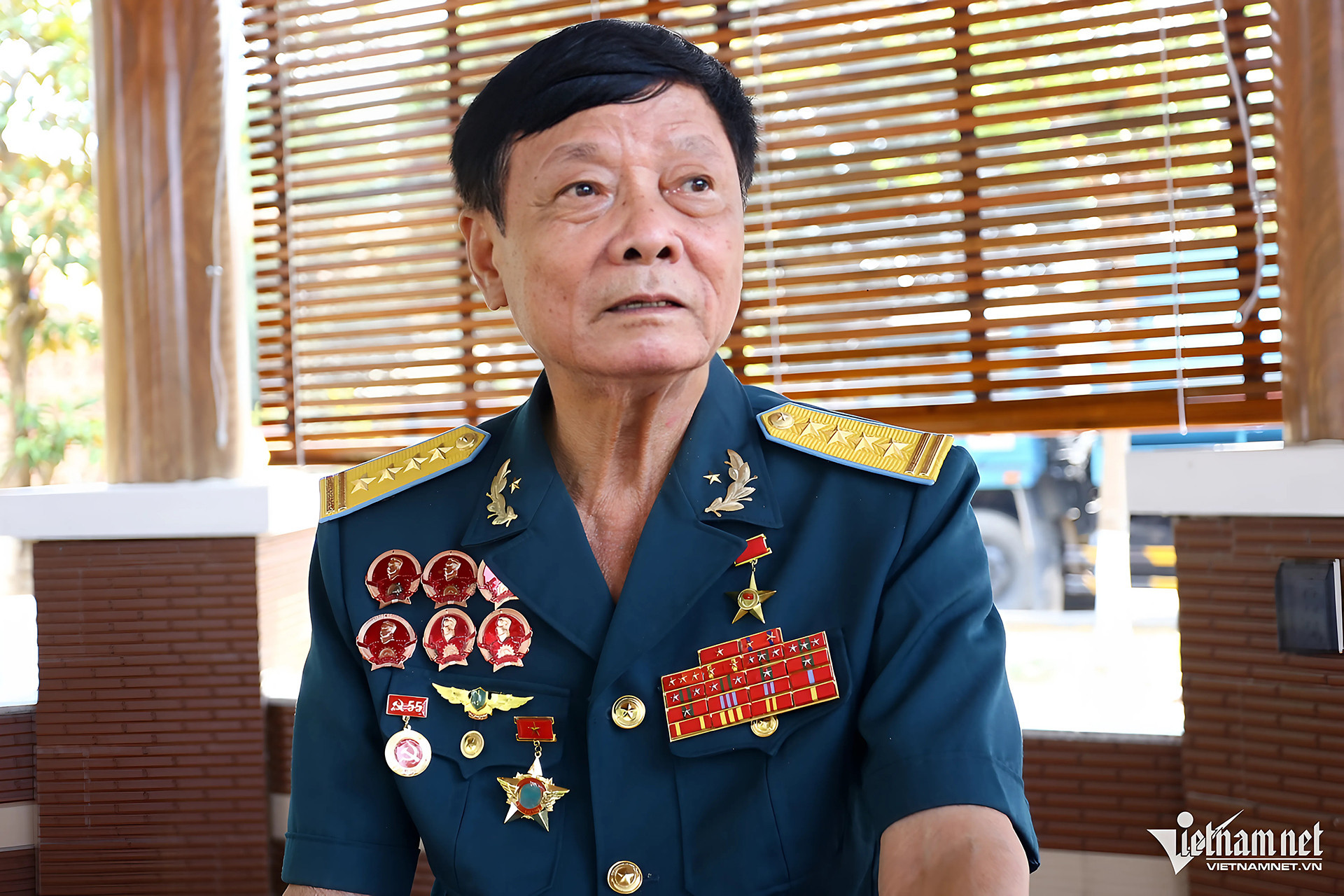Half a century after the historic victory, the country is entering a new era - “building a glorious future for the Vietnamese people.” On this special occasion, VietNamNet presents a series titled “April 30 - A new era,” featuring experts, military strategists, and historical witnesses who share memories, lessons, and experiences from the resistance war against the United States.
These reflections speak to the power of unity, national independence, and the unwavering belief in a bright future. They highlight the importance of people’s strength, international support, and strategic diplomacy in safeguarding the homeland.
A return to the skies of history

Colonel Nguyen Van Nghia. (Photo: Hoang Anh)
Recently, Colonel Nguyen Van Nghia, Hero of the People's Armed Forces and former commander of Regiment 935 (Division 370), revisited his former unit at Bien Hoa Air Base in Dong Nai Province.
The visit stirred powerful memories of his combat days and, most vividly, of the aerial parade over what was then Saigon in May 1975.
Leading the historic MiG-21 flyover
Born in 1946 in Quang Ngai, Nguyen Van Nghia moved north with his father for education and later enlisted in the military.
In 1965, he was selected for the air force and sent to the Soviet Union for fighter pilot training. After three years, he returned in 1968 and participated in numerous missions to protect Vietnamese airspace.
He vividly recalls May 12, 1975, when a formation of twelve MiG-21s led by him took off from the north, bound for Bien Hoa Air Base. Due to bad weather, the squadron had to pause in Da Nang and continued the journey the next day, landing at Bien Hoa at 10:30 a.m. on May 14.
"On May 15, we carried out our mission - two squadrons of four aircraft each flew over the Independence Palace in a victory celebration," Colonel Nghia recounted.
He remembered that the flyover was witnessed by many high-ranking leaders, including President Ton Duc Thang.

“As our MiG-21s roared above the Independence Palace, the sound of the jet engines thrilled the crowds below. Not long before, we had defeated the U.S. air force. We were proud to fly over the liberated city, showcasing the strength of Vietnam’s air force,” he recalled.
Following the performance, the formation returned to Bien Hoa safely. On May 16, another squadron flew a second mission over the newly liberated city, marking a new chapter for the Vietnamese Air Force.
Passing the torch to the next generation
Back at Bien Hoa Air Base, Colonel Nghia was moved to witness the transformation and strength of the current air force. Today’s young pilots are following in the footsteps of their predecessors, continuing the mission of safeguarding the nation’s skies.
“We were the trailblazers. Seeing the current flight formations is exciting. The air force has grown stronger in both skill and scale. Complex exercises are being executed successfully, reflecting the solid development of our air capabilities,” he said.
During his visit, he met and spoke with young pilots, sharing invaluable experience from the time he led the MiG-21 squadron over the Independence Palace five decades ago.
Legacy of leadership in new skies

This year, Colonel Nguyen The Dung, political commissar of Division 371 and a Su-30MK2 fighter pilot, will lead the formation for the upcoming April 30 flyover.
Sharing about the mission, Colonel Dung said that, according to air force protocols and training curricula, the squadron leader is fully responsible for the flight and safety of all members. From taxiing to takeoff and safe landing, the leader must command with precision and coordination.
“Flying over a large city with many tall buildings and complex terrain requires thorough study of flight parameters and safety margins. It is both a great honor and a heavy responsibility. A leader must have firm resolve and deep technical knowledge to guide the squadron to success,” he emphasized.
With unwavering belief in the strength of the military, Colonel Nghia affirmed, “Today’s Vietnamese Air Force is a steel punch defending the sovereignty of our skies and islands.”
Hoang Anh